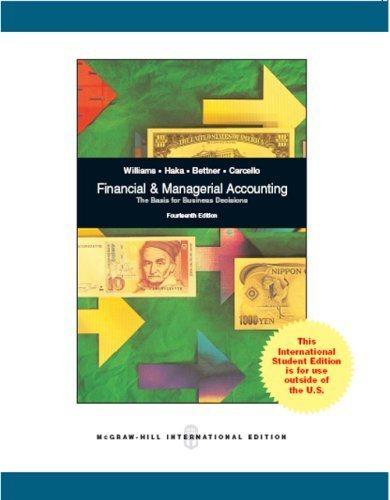SUI sells presses. At December 31, 2011, SUIs inventory amounted to $500,000. During the first week of
Question:
Jan. 5 Purchased 60 machines from Double, Inc. The total cost of these machines was $40,000, terms 3/10, n/60.
Jan. 10 Sold 30 different types of products on account to Air Corporation. The total sales price was $28,000, terms 5/10, n/90. The total cost of these 30 units to SUI was $10,000
(net of the purchase discount).
SUI has a full-time accountant and a computer-based accounting system. It records sales at the gross sales price and purchases at net cost and maintains subsidiary ledgers for accounts receivable, inventory, and accounts payable.
Instructions
a. Briefly describe the operating cycle of a merchandising company. Identify the assets and liabilities directly affected by this cycle.
b. Prepare journal entries to record these transactions, assuming SUI uses a perpetual inventory system.
c. Explain the information in part b that should be posted to subsidiary ledger accounts.
d. Compute the balance in the Inventory control account at the close of business on January 10.
e. Prepare journal entries to record the two transactions, assuming that SUI uses a periodic inventory system.
f. Compute the cost of goods sold for the two weeks of January assuming use of the periodic system. (Use your answer to part d as the ending inventory.)
g. Which type of inventory system do you think SUI most likely would use? Explain your reasoning.
h. Compute the gross profit margin on the January 10 sales transaction.
Ending Inventory
The ending inventory is the amount of inventory that a business is required to present on its balance sheet. It can be calculated using the ending inventory formula Ending Inventory Formula =...
Fantastic news! We've Found the answer you've been seeking!
Step by Step Answer:
Related Book For 

Financial And Managerial Accounting
ISBN: 12
14th International Edition
Authors: Jan R. Williams, Joseph V. Carcello, Mark S. Bettner, Sue Haka, Susan F. Haka
Question Posted:





